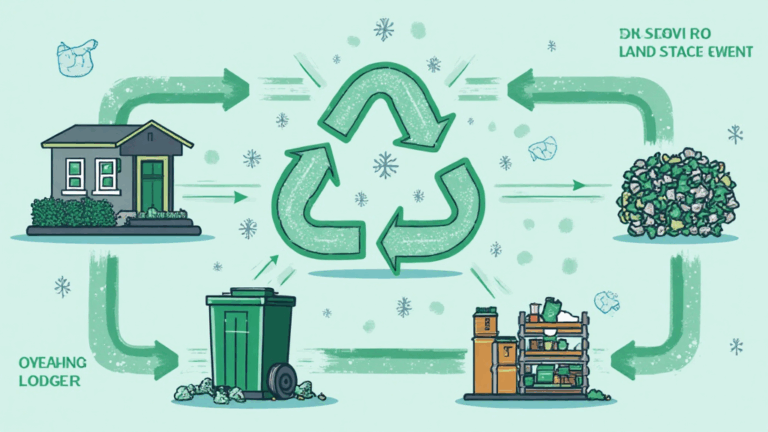
Introduction
With over $4.1 billion lost to DeFi hacks in 2024, the need for robust and efficient blockchain technology has never been more pressing. As we delve into the intricate relationship between Bitcoin, blockchain technology, and energy efficiency, understanding how these elements intertwine is crucial for both investors and developers. This article will explore innovative ways to enhance energy efficiency in the Bitcoin blockchain, offering valuable insights to navigate the future of digital assets.
The State of Bitcoin Energy Consumption
As of 2023, the Bitcoin network is notorious for its significant energy expenditure. According to the Cambridge Centre for Alternative Finance, Bitcoin mining uses an estimated 130 terawatt-hours (TWh) of electricity annually, comparable to the energy consumption of entire countries like Argentina. The increasing demand for Bitcoin has raised questions about its sustainability and environmental impact. Here’s the catch: while the efficiency of Bitcoin mining has seen some improvements, it’s still a long way from being environmentally friendly.
- Current Usage: The energy used per transaction currently sits at around 741 kWh.
- Carbon Footprint: Approximately 61% of Bitcoin mining relies on fossil fuels.
- Renewable Energy Adoption: Recent reports indicate that the share of renewables in Bitcoin’s energy mix is about 39%.
Comparison with Traditional Banking Systems
When comparing Bitcoin’s energy usage with that of traditional banking systems, we find intriguing similarities and disparities. Like a bank vault for digital assets, currency exchanges and bank operations also require substantial energy. A study conducted by the World Economic Forum highlights that traditional banking consumes around 263 TWh annually.

| System | Annual Energy Consumption (TWh) |
|---|---|
| Bitcoin Mining | 130 |
| Traditional Banking | 263 |
Innovations Towards Energy Efficiency
To address rising concerns, various innovations are being developed to enhance Bitcoin blockchain energy efficiency:
1. Transitioning to Sustainable Energy Sources
Many miners are starting to leverage renewable energy sources. For instance, mining operations in regions with abundant hydropower, such as Washington State, are witnessing a surge. Utilizing renewable energy significantly reduces the carbon footprint. According to the International Energy Agency, transitioning to renewables may help increase Bitcoin’s sustainability and balance its energy consumption.
2. Proof of Stake and Alternative Protocols
Currently, Bitcoin relies on the proof-of-work consensus mechanism, which is energy-intensive. An alternative approach being considered is proof of stake (PoS), which is significantly more energy-efficient as it doesn’t require extensive computations. PoS relies on validators holding and staking their coins, which could lead to improved energy dynamics within the network.
3. Energy-Efficient Mining Hardware
Advancements in hardware technology are crucial for improving energy efficiency. The introduction of next-generation mining rigs, such as the Bitmain Antminer S19 Pro+, has resulted in enhanced performance while consuming less electricity. This minimization of energy consumption is vital for lowering operational costs and boosting sustainability within the blockchain sector.
- Key Hardware Innovations:
- Bitmain Antminer S19 Pro+ – 3250W for 110 TH/s
- MicroBT Whatsminer M30S – 3400W for 112 TH/s
Market Insights on Vietnam’s Crypto Adoption
As we analyze the global landscape, it’s important to delve into localized markets such as Vietnam, where cryptocurrency adoption has surged significantly. In 2023, Vietnam experienced a user growth rate of over 60%, reflecting heightened interest in cryptocurrencies amidst financial uncertainty. Among these, Bitcoin dominates the Vietnamese crypto market, serving as a primary medium of exchange.
Vietnam Market Statistics:
- Current Bitcoin users in Vietnam stand at 12 million.
- Projected growth of cryptocurrency transactions in 2025 is expected to reach $7 billion.
Vietnam’s Role in the Future of Bitcoin
With increasing digital infrastructure and government support, Vietnam is positioning itself as a key player in the blockchain technology realm. Engaging in educational initiatives around blockchain technology and its applications contributes to a more sustainable and efficient crypto ecosystem.
Conclusion
In conclusion, while the Bitcoin blockchain’s energy efficiency remains a critical issue, ongoing innovations and regional developments portray a hopeful future. Transitioning towards renewable energy, leveraging advanced mining technologies, and exploring alternative protocols like proof of stake significantly bolster Bitcoin’s sustainability. As Vietnam sets the stage for future growth in the cryptocurrency sector, stakeholders must prioritize integrating energy-efficient practices to capitalize on emerging opportunities. Discover more about energy efficiency strategies for the Bitcoin blockchain at hibt.com.
Stay ahead in the evolving crypto landscape, understanding the nuances of energy demand and blockchain technology.
— An Expert in Blockchain Technology, with over 20 published papers and experience in leading audits for notable blockchain projects.






